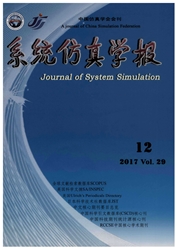

 中文摘要:
中文摘要:
分析了行人交通的基本特征,并提出了基于动态博弈的行人交通微观仿真模型。通过行人的移动环境抽象、路径选择、速度选择、碰撞处理和空间占用冲突处理等五个步骤确定了模型的基本框架,并对每步作了较详细的分析。最后,通过仿真试验并与经验数据相比较,表明该模型具有合理性和有效性。与已有模型相比,该模型在提高运算精度的基础上解决了行人交通仿真中存在的同步决策等问题。
 英文摘要:
英文摘要:
The characteristics of pedestrian traffic were analyzed. A microscopic pedestrian simulation model was proposed based on dynamic game. In order to show the frame of the model, five modeling steps were introduced including the abstract of pedestrian moving environment, route choice, speed selection, collision detection and dynamic game. By comparing the simulation result with field data, it is shown that the model is logical and effective. It is concluded that the proposed model improves the calculation precision and solves such problems as synchronized decision existing in pedestrian simulation.
 同期刊论文项目
同期刊论文项目
 同项目期刊论文
同项目期刊论文
 期刊信息
期刊信息
